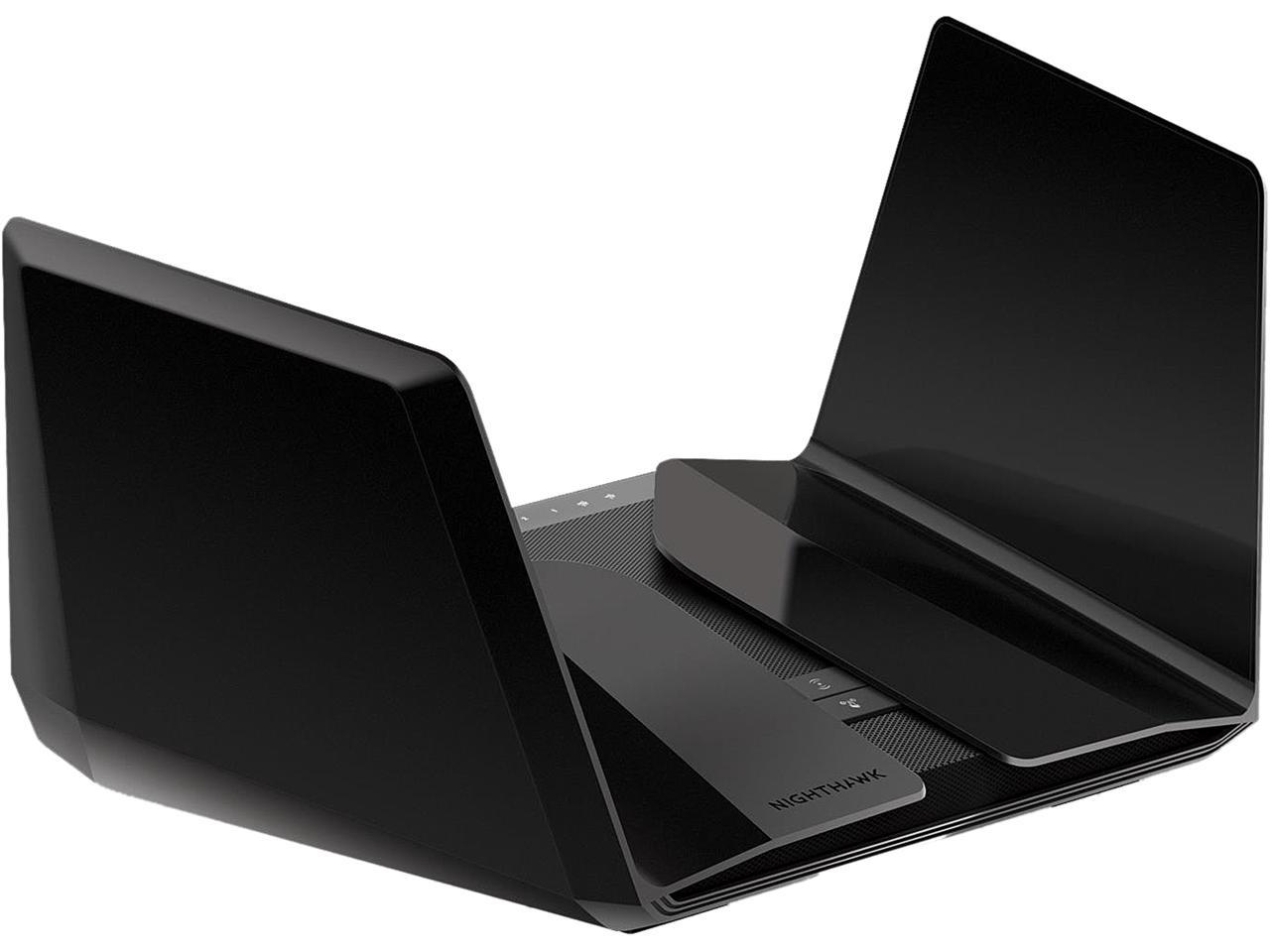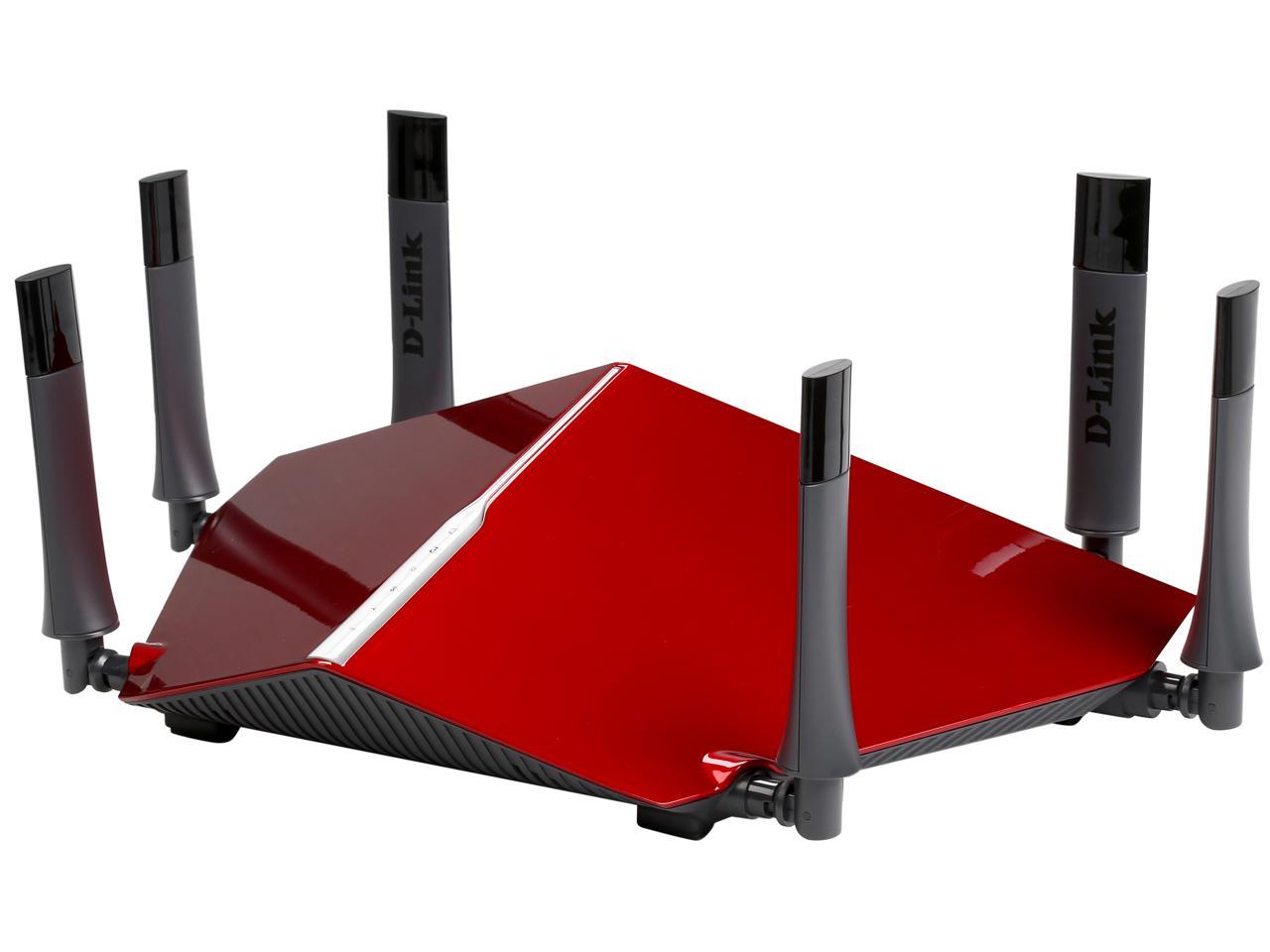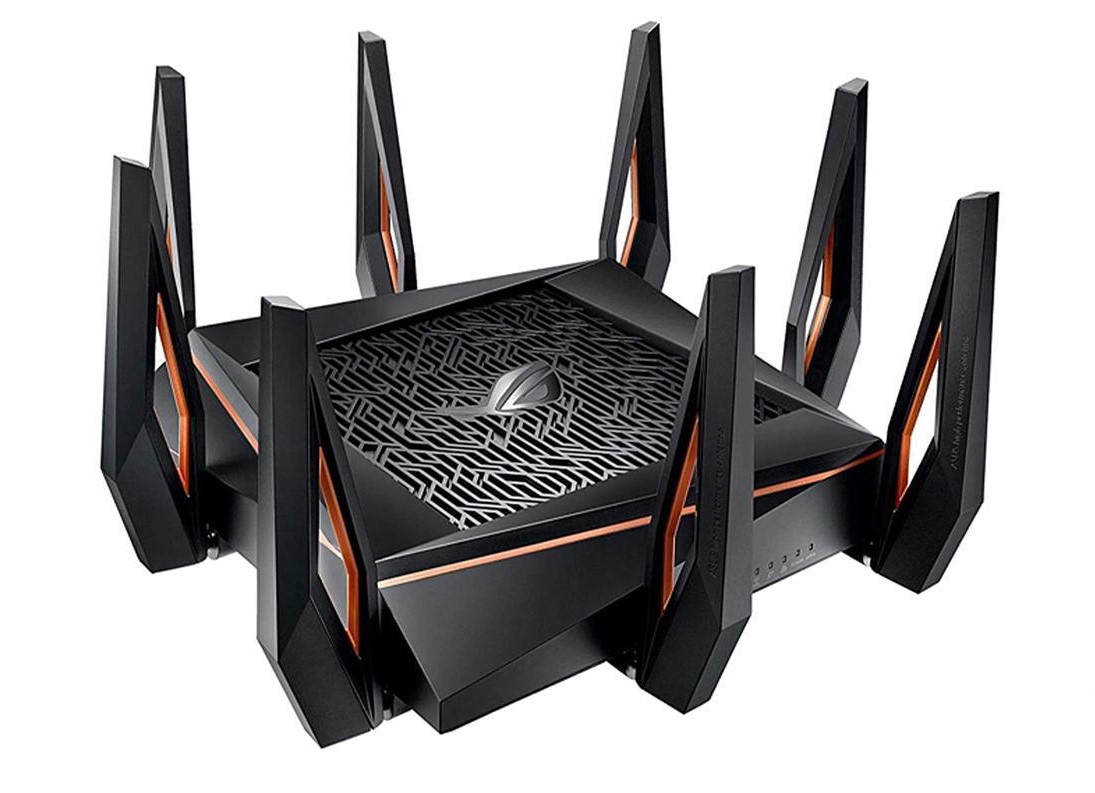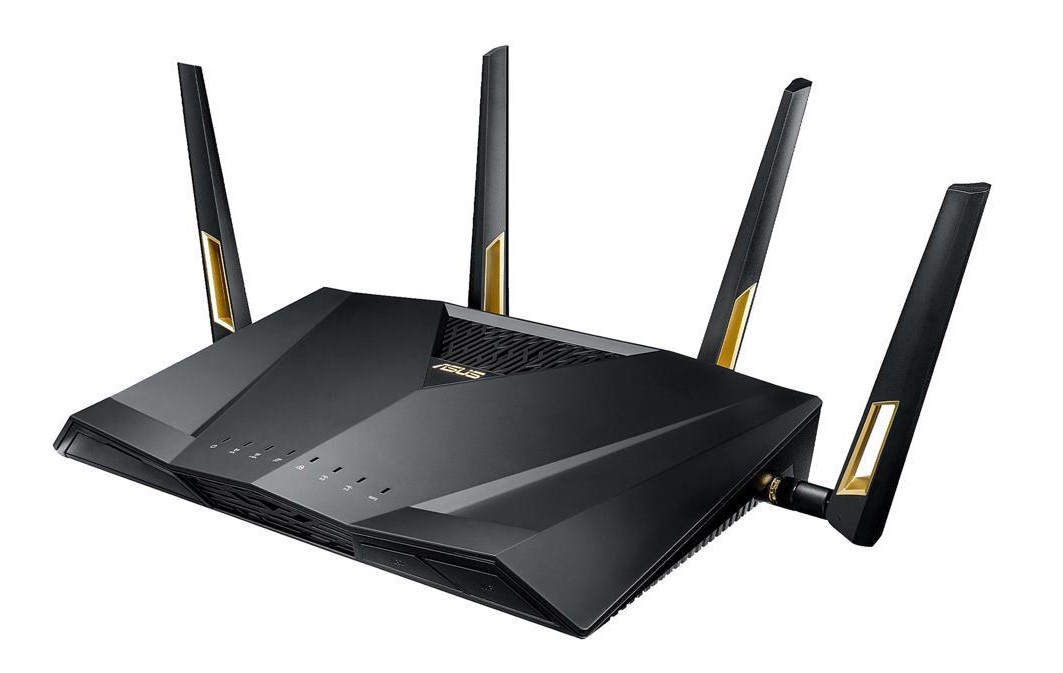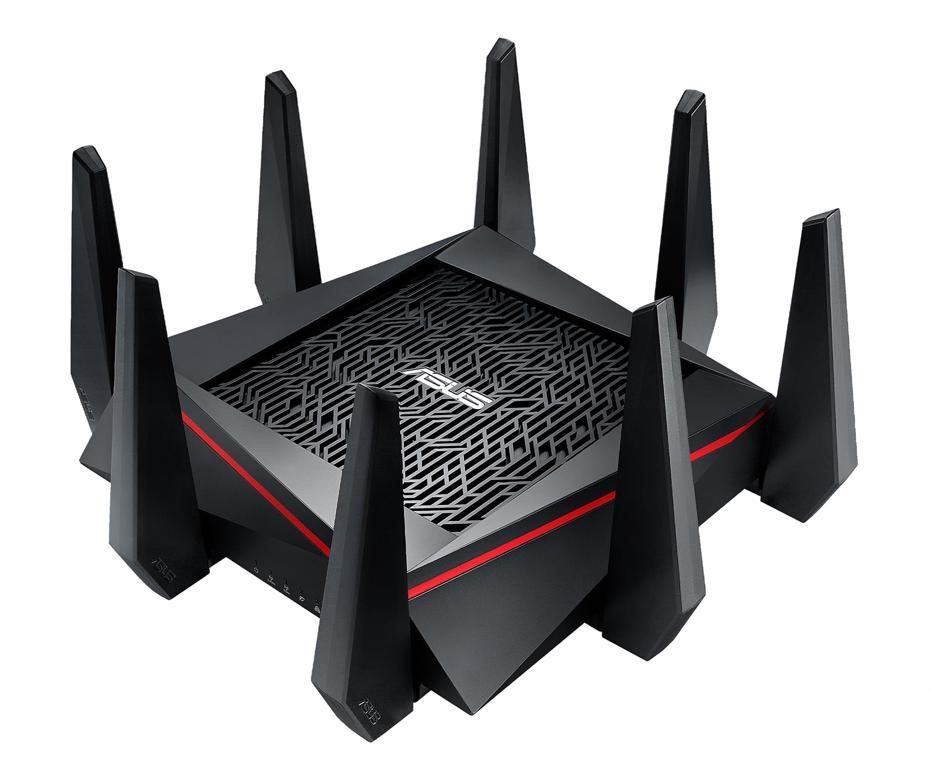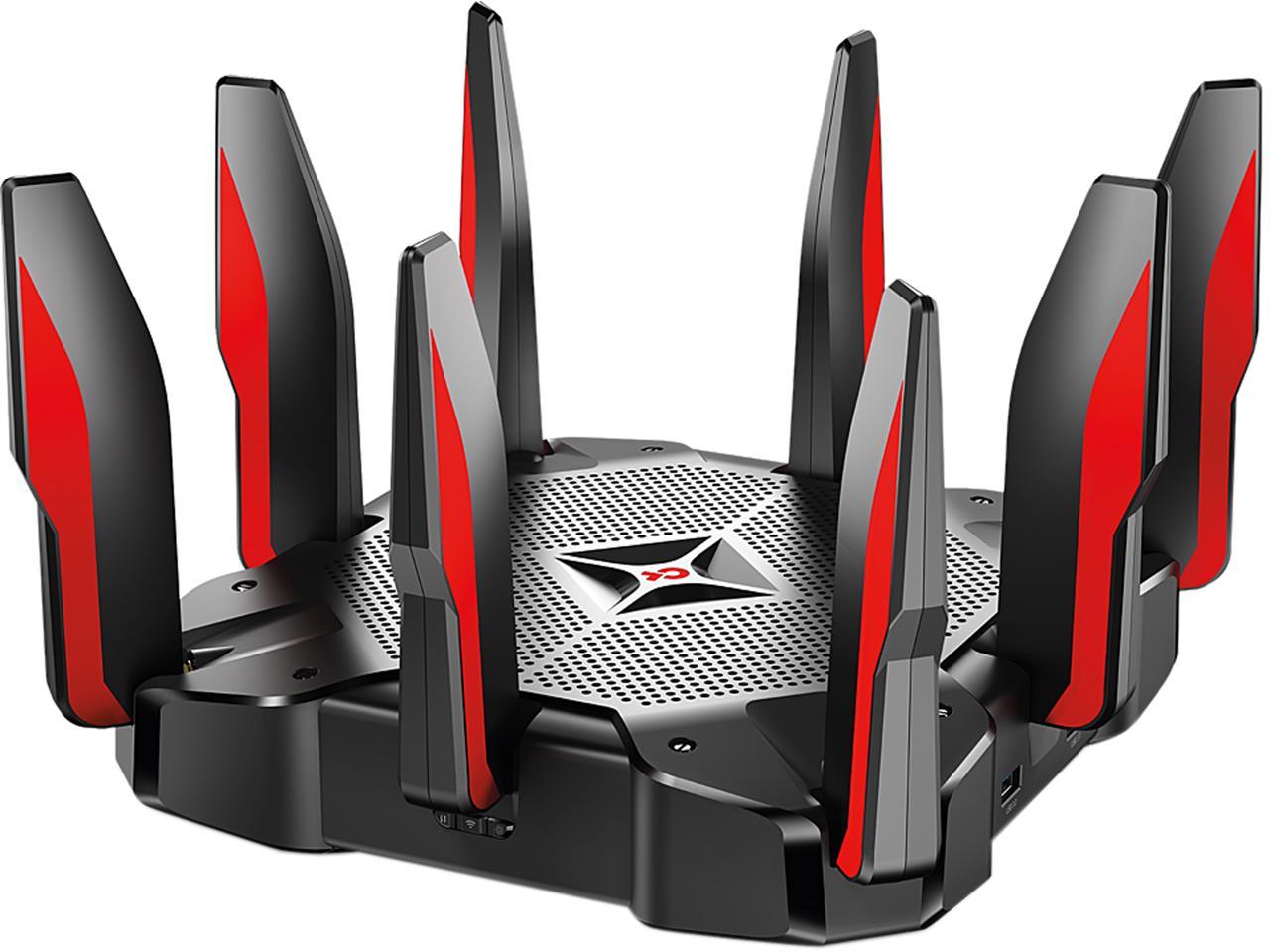
It’s happened to every gamer. You’re in a multiplayer game either racking up the player kills, setting up the final KO, or getting your army ready for a decisive battle. Then it happens—you lag out. You may have gone ahead and searched things like: “Why is my Internet cutting out while I’m gaming?” or “how to fix lag during gaming”.
The exact causes may vary, but if it’s been a few years since you’ve upgraded your home wireless router, that could be a good place to start looking. What follows in this guide will help you choose the best wireless router for gaming.

Reviewing Your Current Setup
Before getting into the specifics of what needs to change in your current networking setup, we’ve assumed the following have been tested or covered on your end:
- Restarting or power cycling. Unplugging the power cable from the wall socket and router + modem, then waiting for at least a minute.
- Testing your network connection through by way of wired connection (Ethernet cable to the back of your router), so as to see whether your PC’s WiFi card is faulty.
- Moving your setup to another part of your home, closer to your router, to see if your current setup is in a WiFi dead zone.
- Following Microsoft’s recommended troubleshooting tips.
Now, the worst case scenario comes when you’ve contacted your service provider, scheduled an appointment, and even after they’ve set you up with new equipment—the problem still persists. If this is you, it may be time to consider upgrading your networking gear, specifically your wireless router.
Depending on your service plan, the router provided by your ISP may not be enough to handle your gaming workload—let alone when that bandwidth you need is competing with anyone else using the Internet in your house. Fret not, for not all routers are created equal, and a gaming router may be just what you need to ultimately elevate your gaming experience.

What Is a Wireless Gaming Router?
What differentiates a gaming router from a standard one is its ability to prioritize network traffic and distribute bandwidth. A standard router an ISP gives out to its customers usually have generalized settings that distribute bandwidth. Routers first serve devices requesting data packets (i.e. loading a website or playing a video). It’s basically “first-come, first-serve”. But it’s also based on what device is closest to the 5GHz effective range—followed by 2.4GHz band devices.
Gaming routers utilize the same basics, but come with advanced built-in features that know how to effectively prioritize your gaming network traffic. How well a router can prioritize said traffic depends on how much you’re willing to spend. Investing more in a dedicated gaming router can pay off in improved performance and functionality.
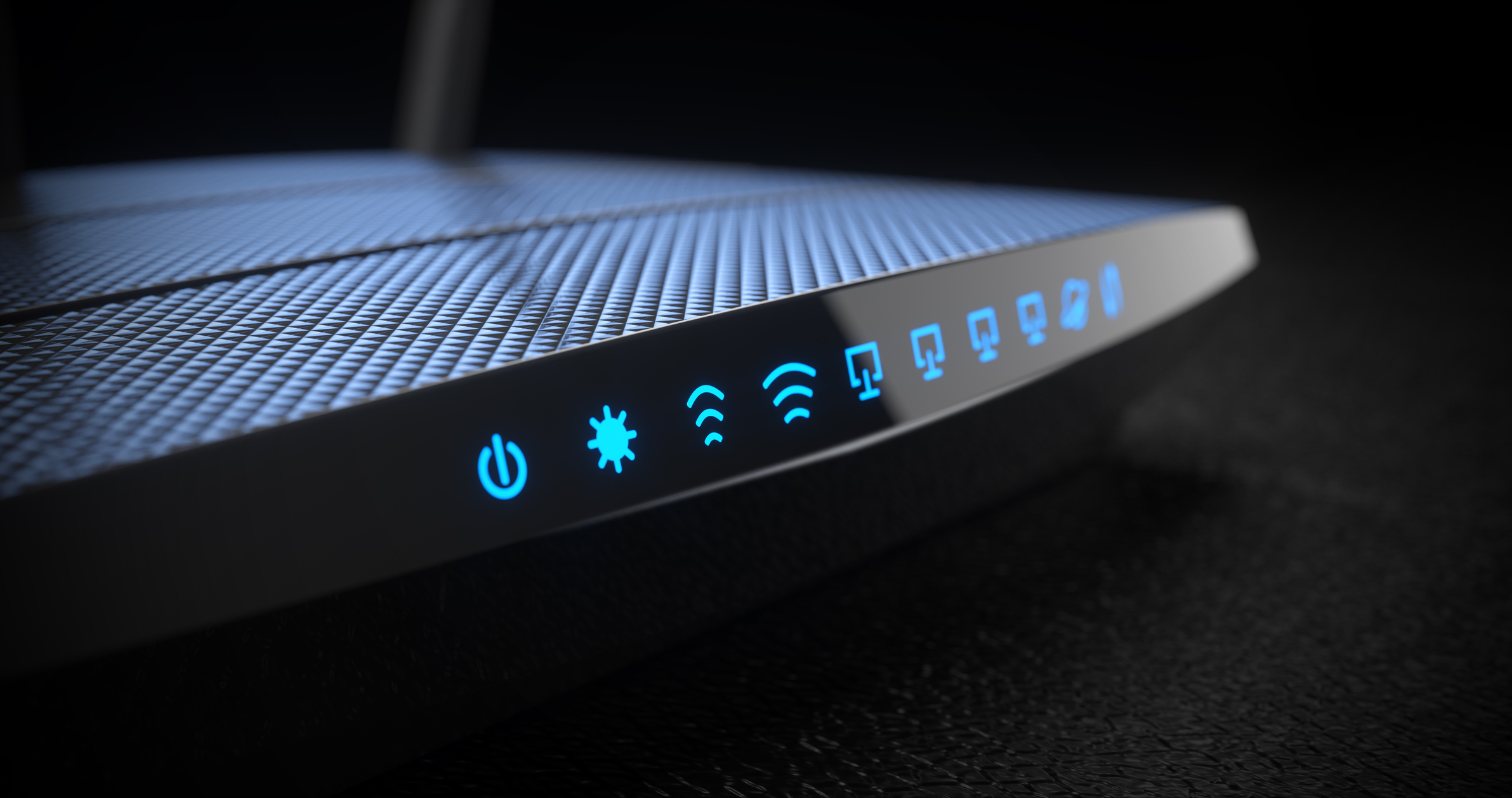
Essential Features for Wireless Gaming Routers
Look out for these features that make a difference for routers specifically intended to support gaming.
The WiFi Standard
If you’ve been researching routers, you’ve probably come across a specification that starts with 802.11—most likely 802.11ac. This collection of numbers and letters is known as a WiFi standard. Thankfully, moving forward the naming of these standards have been simplified. For example, 802.11ac is WiFi 5.
Like any technological advancement, WiFi standards improve with each new iteration. Though WiFi 5 wireless gaming routers have greatly filled the market, the latest WiFi 6 (802.11ax) routers are beginning to take hold. If you’re looking to ensure top-notch wireless gaming connections, purchasing a WiFi 6 wireless router is your best bet.
WiFi 6 boasts up to a 40 percent in higher throughput. This means more data can be transferred per packet. Like their name implies, network packets are pieces of data sent through the Internet, whether it’s a video, email or live gaming-connection data.
Wireless Frequencies
Every router sends out wireless WiFi signals—but how? Similar to a walkie-talkie, wireless network data is transmitted via radio waves. On one end, your computer is a walkie-talkie thanks to its wireless adapter. From there, your router interacts with your system and sends your wireless requests to the Internet via wired connection (either to your modem by way of Ethernet or directly to the Internet via coaxial cable).
These wireless signals are usually sent out via antenna and are done so at a higher frequency than common radio signals. Whereas AM and FM radio stations work within kHz and MHz frequencies respectively, today’s routers fire off at 2.4GHz and 5GHz. This higher frequency allows more data to be moved through the air. And, following each new WiFi standard, these bands have been continuously optimized for more efficient data transfer.
Dual-Band vs. Tri-Band
When a router utilizes both 2.4GHz and 5GHz wireless frequencies, it is known as a dual-band router. The 2.4GHz band is best at serving devices from long distances, but even on the best of routers can only hit up to 1,000Mbps or 1Gbps. Meanwhile, the 5GHz band is more effective at shorter ranges and can hit speeds well above 1Gbps. Raising the bar for 5GHz efficiency, tri-band routers add an additional 5GHz band to the mix. Doing this reduces signal noise and interference while also improving the ability for your wireless network to provide good speeds to more devices.
With tri-band routing, some companies are claiming 4Gbps and beyond as the new standard. Remember, you still need to have a top-tier speed plan from your ISP to properly utilize these features. Also, the advertised number is the collective speed of the three bands altogether. For example, an AC3200’s 3,200Mbps (3.2Gbps) callout results from the 2.4GHz band hitting 450Mbps and two 5GHz bands hitting 1,300Mbps each.
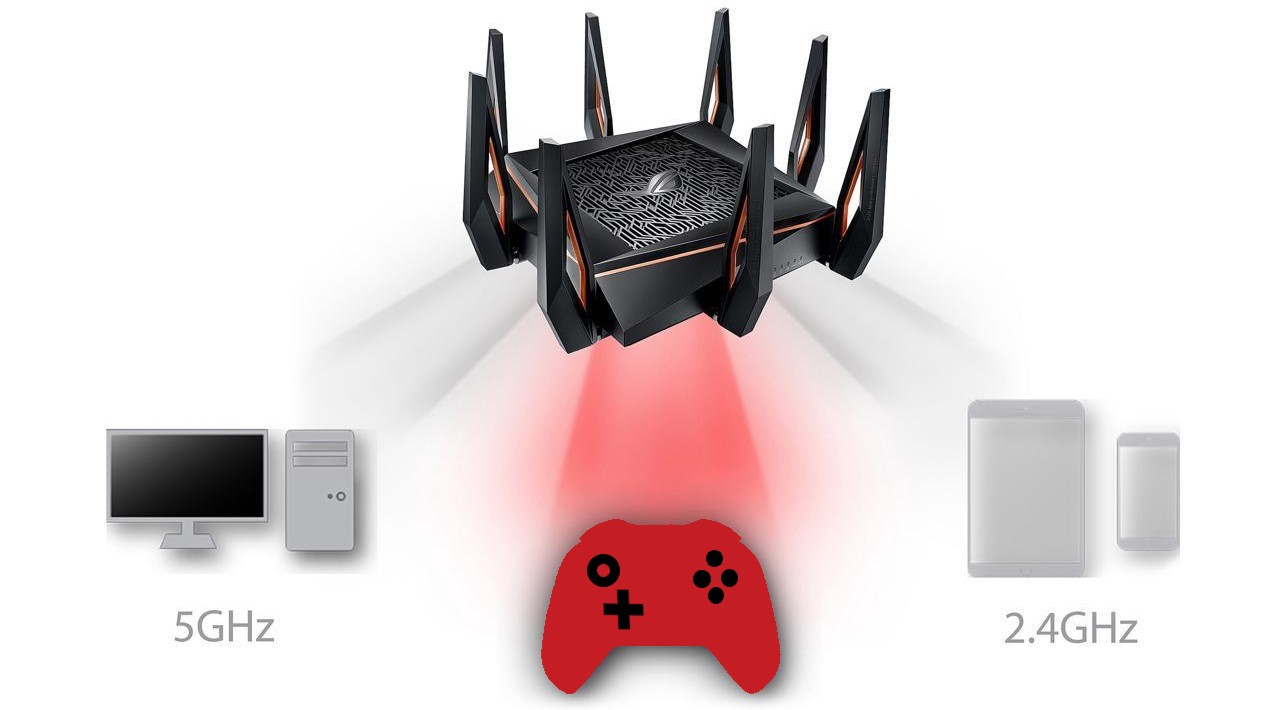
QoS
Every good gaming router uses Quality of Service (QoS) to fend off the following unwanted symptoms:
- Packet loss: When the data you have requested gets lost in the mix and fails to reach you and/or the Internet. In gaming, you’ll get automatically booted from a server for this.
Side note: the amount of packets that a router can move at once is known as network throughput. - Jitter: Quick and unruly real-time signal displacement caused by electromagnetic interference from crossed signals. Measured in milliseconds, this effect is most noticeable in live video calls.
- High latency: Latency is the overall measurement of network-data transfers from the Internet to you—and vice versa. Low latency is ideal because it means less delays in this process. High latency means things are taking much longer to process.
So, how does QoS work? First, this feature identifies the applications currently using your network’s resources. Each source of traffic is categorized by which ones benefit most from managing packet loss, jitter and high latency. From there, QoS sets a policy so your router will dish out preferential management to the applications that need it—namely, gaming.
The main idea behind QoS is based on the fact that activities like real-time, competitive gaming require more resource management than IoT (Internet of Things) devices such as smart thermostats or always-on devices like home surveillance.
Note: As you research wireless gaming routers you may see that many of them come with their own processors. But wait, why does a router need a processor? Every computing device needs a central processing unit to carry out its functions. In the case of routers, their built-in functions like QoS and MU-MIMO are better carried out with higher-level processors.
MU-MIMO
Standing for “Multi User-Multi Input, Multi Output”, the MU-MIMO feature on certain routers is absolutely key for home networks that have lots of devices. The “MIMO” part of this feature was first implemented to increase the amount of antennas on routers and access points. Along with the increase, MIMO improved each antenna’s ability to transmit and receive connective networking data.
The 802.11 (now just WiFi) standard initially implemented a”first-come, first-serve” way of serving networking data. MU-MIMO was made to better optimize this function. Rather than having to wait in line for your turn, MU-MIMO equally splits bandwidth into “streams”. As an added bonus, this process also creates better security since MU-MIMO needs to scramble the data before sending out to each stream. This data is scrambled in a way so that only the intended stream can decipher the transmission.
For MU-MIMO to properly work, please note the following:
- Devices right next to each other will use the same stream. To avoid this, you’ll have to move one device to another area.
- MU-MIMO generally works better for download activities such as gaming. Upload activities such as video uploading and streaming work better with more antennas.
- WiFi 5 (802.11ac) MU-MIMO only works for the 5GHz band(s). WiFi 6 (ax) supports both 2.4 and 5GHz.
- Not every router supports MU-MIMO—make sure to check the specifications for any gaming router you’re looking at.
- A speedier (and pricier) network plan makes MU-MIMO work better so don’t expect this feature to improve an already-slow wireless speed.
Note: Certain WiFi 6 routers may also use a feature called Orthogonal Frequency-Division Multiple Access (OFDMA). OFDMA splits bandwidth into “resource units” and is more effective with small-packet deliveries, such as smart-home device connections.

Today’s Best Gaming Routers
The following routers provide a number of features perfect for those who wish to game over a wireless connection. Many of them also have a futuristic design that will fit nicely with a typical gamer aesthetic.
The star of Netgear’s flagship series, the Nighthawk AX11000 router is one of the leaders paving the way for the new WiFi 6 standard. This wireless gaming router also boasts a range that can cover the largest of homes.
Features:
- Tri-Band (2.4GHz + 5GHz + 5GHz)
- Combined Max 10.8Gbps Wireless Speed (2.4GHz Up to 1.2Gbps & Both 5GHz Up to 4.8Gbps)
- 12 WiFi Streams
- 1.8GHz Quad-Core Processor
- Can Handle Up to 24 Clients
- 8 Antennas to Extend Indoors & Outdoors
- Nighthawk Mobile App to Run Speed Tests & Pause/Start Network
$548.99
The D-Link DIR-890L/R stands on top of the industry as one of the best 802.11ac (WiFi 5) routers. This wireless gaming router utilizes Smart Connect Technology (QoS) to connect one of its three bands to the right devices that need it.
Features:
- Tri-Band (2.4GHz + 5GHz + 5GHz)
- Combined 3,200Gbps Wireless Speed (Up to 600Mbps for 2.4GHz & Up to 1,300Mbps for Each 5GHz)
- 1GHz Dual-Core Processor
- Advanced QoS Traffic Prioritization
- AC SmartBeam Feature Tracks Connected Devices for Enhanced Distribution
- Remote Access/Management from Smartphone/Tablet
$399.99
ASUS ROG Rapture GT-AX11000 is a stand-up contender in this fresh WiFi 6 market. Boasting “triple-level game acceleration”, this router maximizes the connection between your network and game’s server.
Features:
- Tri-Band (2.4GHz + Dual 5GHz)
- Combined 10.7Gbps Max Wireless Speed (2.4GHz Up to 1,148Mbps and Both 5GHz Up to 4,804Mbps)
- 1.8GHz Quad-Core CPU
- Built-in Network Security
- Works Well with Other ROG Devices (Motherboards, Desktop PCs & Laptops) via Game First V Network-Acceleration Software
- MU-MIMO & Advanced QoS
$375.99
At a slightly lower price point, the ASUS RT-AX88U is a solid option for those who want to start using the WiFi 6 standard.
- Dual-Band (2.4GHz + 5GHz)
- Combined Speed Up to 5.9Gbps (2.4GHz Up to 1,148Mbps & 5GHz Up to 4,804Mbps)
- MU-MIMO & OFDMA
- 1.8GHz Quad-Core Processor
- AiProtection Network Security
- Adapative QoS & Traffic Analyzer
- AiRadar & RangeBoost for Better Coverage + Signal
- Parental Controls
$299.99
One of ASUS’ best WiFi 5- routers, the RT-AC5300 has many of the same features as its later-standard siblings.
- Tri-Band (2.4GHz + 5GHz + 5GHz)
- Combined Throughput of 5.3Gbps (1,000Mbps for 2.4GHz and 2,167Mbps for Each 5GHz Band)
- MU-MIMO
- 1.4GHz Dual-Core Processor
- AiProtection Network Security
- ASUS Smart Connect Dynamically Switches Between 2.4 and 5GHz
$271.99
A top manufacturer in the networking game, TP-Link’s Archer C5400X is a monster of a WiFi 5 router at a great price.
- Tri-Band (2.4GHz + Dual 5GHz)
- Combined Wireless Speed Up to 5.3Gbps (1,000Mbs 2.4GHz & 2,167Mbps for Each 5GHz)
- MU-MIMO
- 1.8GHz Quad-Core Processor
- Bluetooth Setup Setup with Smartphone & Tether App
- RangeBoost for Singal Coverage
- QoS Gaming Mode
$219.99
Prices and availability of products discussed were accurate at time of publication, but are subject to change.
Final Thoughts
Though many hardcore gamers will snub their nose at the idea of gaming through anything outside of a wired connection, today’s best wireless gaming routers have the tools you need to stay the course. The routers showcased in this article currently stand at the top in terms of performance and price. Each manufacturer makes lower-tier versions of these products that, in most cases, can serve your basic gaming needs. Just make sure to cross-check the specifics of your ISP service plan, the information you learned here, and the detailed specs of any router you’re looking at.
For more, browse all of the wireless routers available on Newegg.

